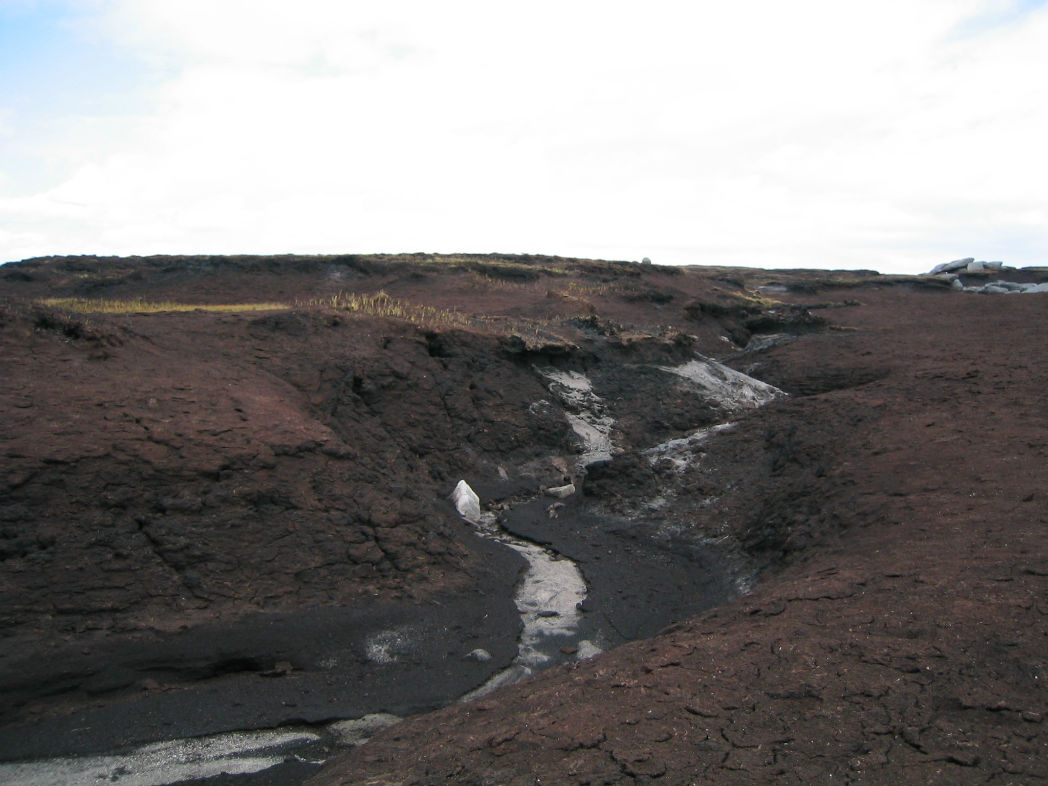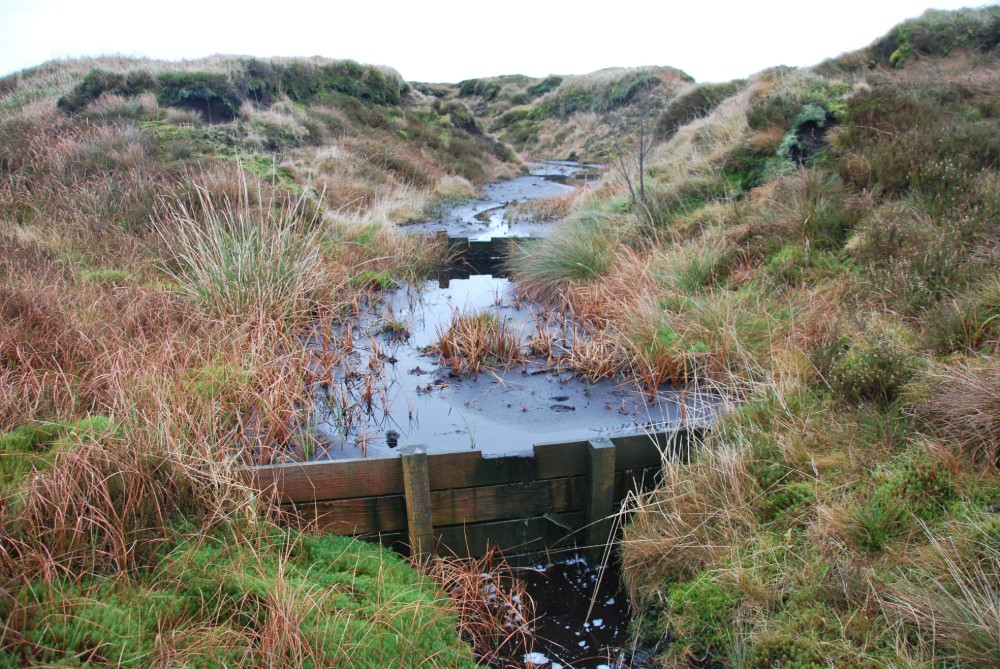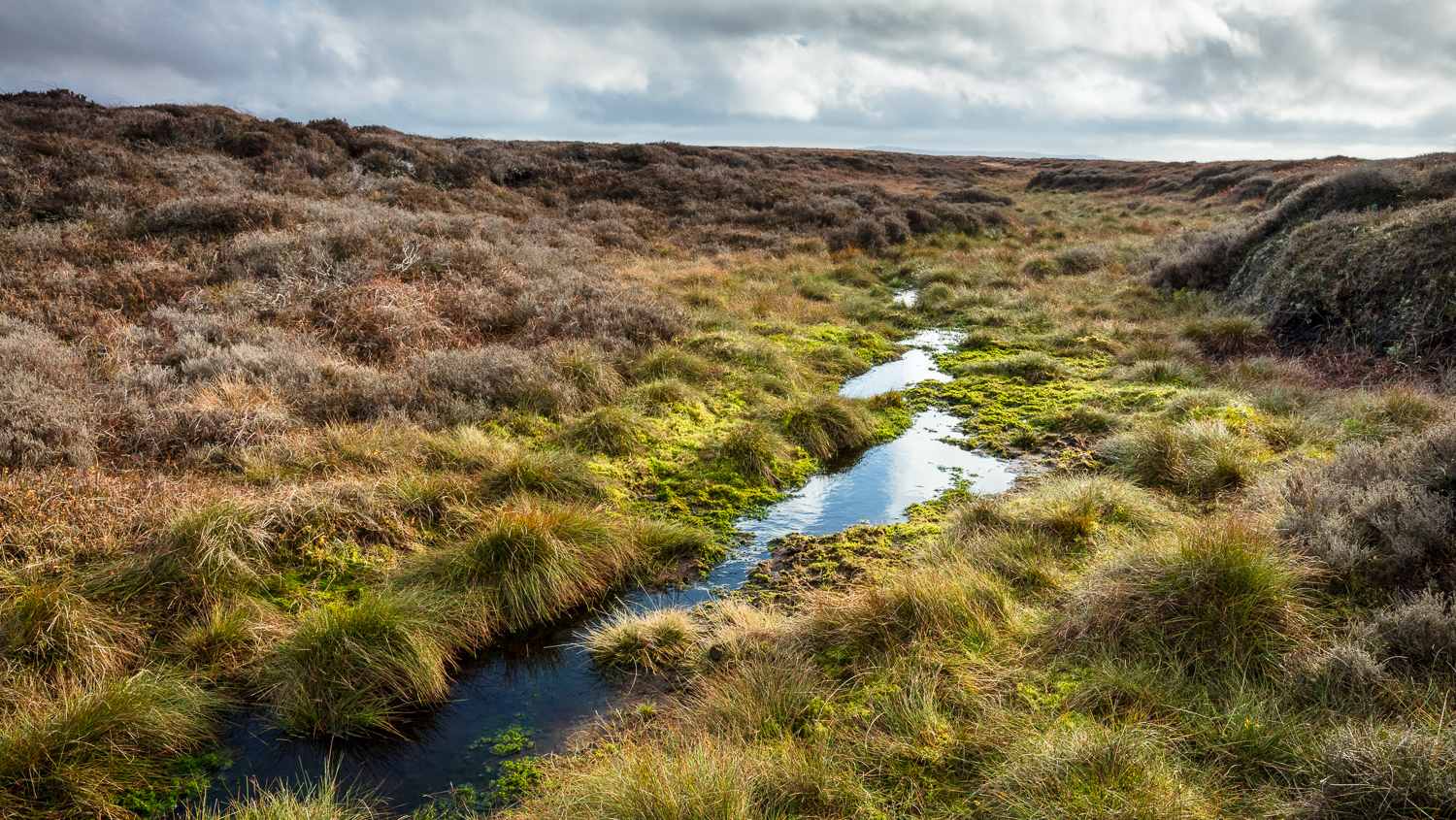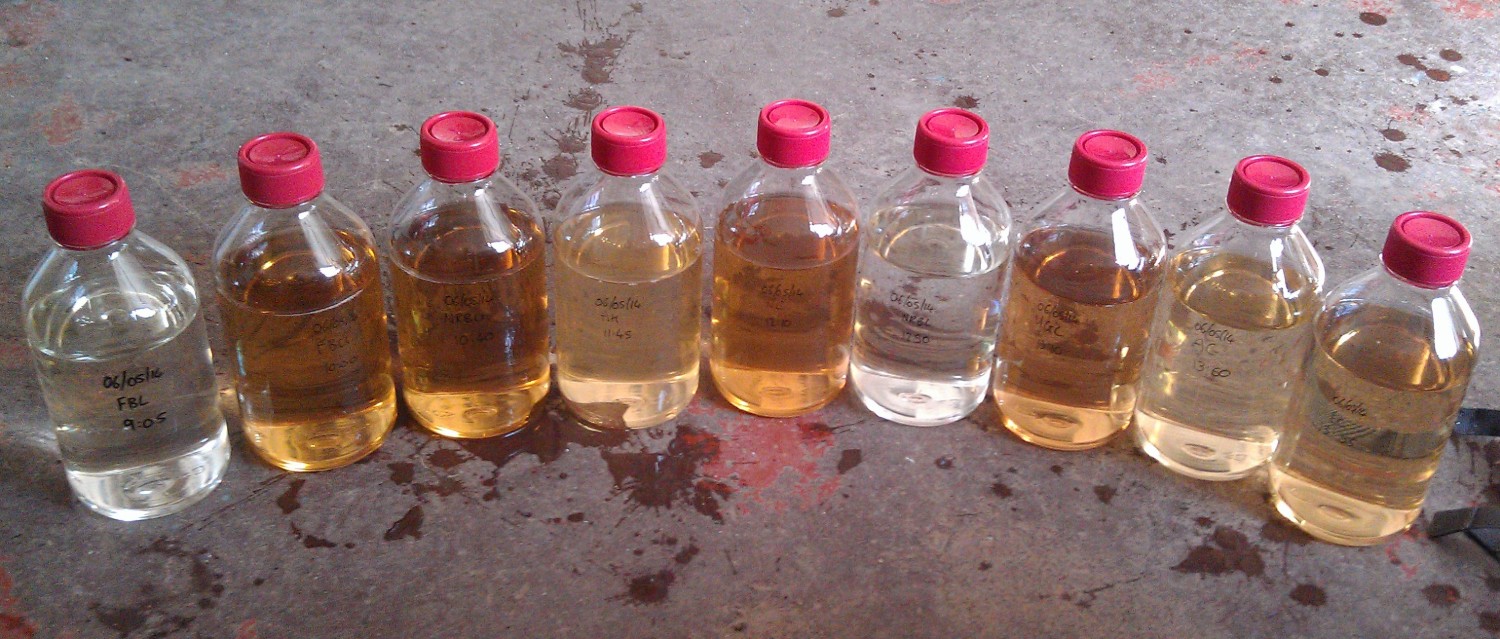Slowing the flow of water from the hills
Water runs quickly over bare peat
Bogs in good condition covered in plants can slow the flow of water
By improving the health of moorlands at a landscape scale, we can help to reduce the risk of flooding in our towns and cities
Blanket bogs are worth protecting because they can help reduce the risk and severity of flooding.
By conserving blanket bogs in the uplands, we can reduce the chance and impact of floods in the valleys below
The blanket bogs we work on are part of a national network of blanket bog habitats covering 10% of the UK land surface. By their nature they occur in the wettest, highest parts of the country. They have a significant impact on the speed with which water reaches communities at risk of flooding because so much rain water passes over and through them.
When blanket bogs are in good condition, they are wet, boggy places covered in vegetation, including a lot of sphagnum moss. The mix of plants on a healthy bog makes the surface of the land rough, so when it rains heavily they slow the water down significantly, making a huge difference to how long it takes for that water to get to the bottom of the hill.
Blanket bogs need protecting
When blanket bogs are in poor condition, particularly where peat is exposed, rain water flows quickly off the moors. Bare peat is very poor at absorbing water and water runs easily over its smooth surface. Furthermore, due to extensive erosion of the soil over time, drainage gullies have developed on many of our moors, providing perfect conditions for water to be funnelled into streams and rivers – in other words, creating perfect conditions for flooding.
Re-vegetating areas of bare peat and blocking erosion gullies and drainage channels (known locally as grips) helps to reduce the rate and amount of water flowing downstream during high rainfall events. Replanting the uplands with moorland species including sphagnum mosses provides that essential surface roughness to lower the rate at which water leaves the moors. Blocking gullies and ditches with a series of mini dams holds water back.
Sphagnum moss can absorb up to 20 times its weight in water. So during the summer, when it rains heavily following dry weather, healthy blanket bogs can absorb some of the water. This keeps water on the hill at source for longer, reducing the likelihood and impact of flooding in the watercourses below.
The likely increase in extreme weather, including flooding, due to climate change comes with an increased risk of higher levels of rainfall and therefore a greater chance of communities being flooded. Flooding costs the UK at least £1 billion per year and has a significant impact on homes, communities and human health and wellbeing. Improving the condition of the upland habitats is an effective and practical way to reduce flood risk at the source.


What we are doing
Our research as part of the Making Space for Water project has shown that by re-vegetating blanket bogs and blocking gullies we can slow the flow of water produced in storms and times of high rainfall. Ultimately, downstream flooding can be reduced by re-vegetating blanket bog.
Our vision for reducing flooding at a landscape scale
The best way to tackle flooding is to look at the entire landscape where rain falls. The more we can slow the flow of water at the source, the less chance there is of flooding below. Blanket bogs play an important part in this process.
The costs of floods to the UK in recent years have received a great deal of publicity because of the high financial costs and the very significant impact on peoples’ lives. This is the result of many factors including changes in land-use, a growing population and also climate change. There are currently 5.2 million properties at risk of flooding and currently flooding costs about £1.1 billion annually and it’s rising each year too (House of Commons Library, 2014). Flooding between November 2019 and March 2020 is estimated to have caused economic losses of about £333 million (Environment Agency Flood and coastal erosion risk management report, 2020).
There is a growing consensus that to manage this properly, we need to consider floods at a catchment scale, looking at every part of the landscape which catches rain, snow, sleet and hail (precipitation), because it all ends up in the same place (the sea), travelling along ever decreasing slivers of land as it travels from high and wide mountains and moors, through managed farmland and busy, compact, concreted towns and cities before eventually flowing into the sea. As the water moves from high ground to the sea, the volume of water increases while the land for it to occupy decreases and it is this which causes floods to occur because our current concrete infrastructure of walls and pipes have reached their limit.
In the past we have protected our houses, hospitals, schools, farms, businesses, towns and cities, using concrete, pipes and walls to keep the water out, hoping it would rush by… draining quickly through channels and straightened rivers. Now we understand that we need to look much further up the hill. As soon as each drop of water lands on the ground, we need to be working with natural processes as much as we can to slow each drop down as soon as we can. That way we can reduce the burden on our current urban drainage systems, by reducing the intense impact of storm events. Working with natural processes to do this is called Natural Flood Management (NFM).

In many cases, trees are a brilliant way to slow the flow of water through our catchments
Their leaves intercept the rain drops before they hit the ground and the tree roots suck up water.
Natural flood management
Blanket bogs are wet, cold and mostly treeless landscapes; trees struggle in the wet, acidic conditions. Trees thrive more on the cloughs and fringes of the blanket bogs where they play their part in slowing the flow of water. Hedges, dry stone walls and areas of long grass and vegetation also work to slow the flow of water down the hill.
On blanket bogs sphagnum is the critical ingredient. Its power to absorb water and to make the ground’s surface rougher makes it the number one contender for slowing the flow of water from our moorlands.
This is just one reason why MFFP is working closely with the Environment Agency, Local Authorities, water companies and others to maximise the benefits of rewetting the moors and enabling more sphagnum to grow. Other benefits include water quality, reducing the impact of climate change, improving biodiversity and making a great place to visit.
Natural Flood Management: an appraisal of current evidence from the Defra-funded multi-objective demonstration projects

Storm surge on Kinder Scout
Our science team set up a time lapse camera hoping to capture how water level rises after a storm. The water level rises to a peak in 24 hours and subsides around 15 hours later.


